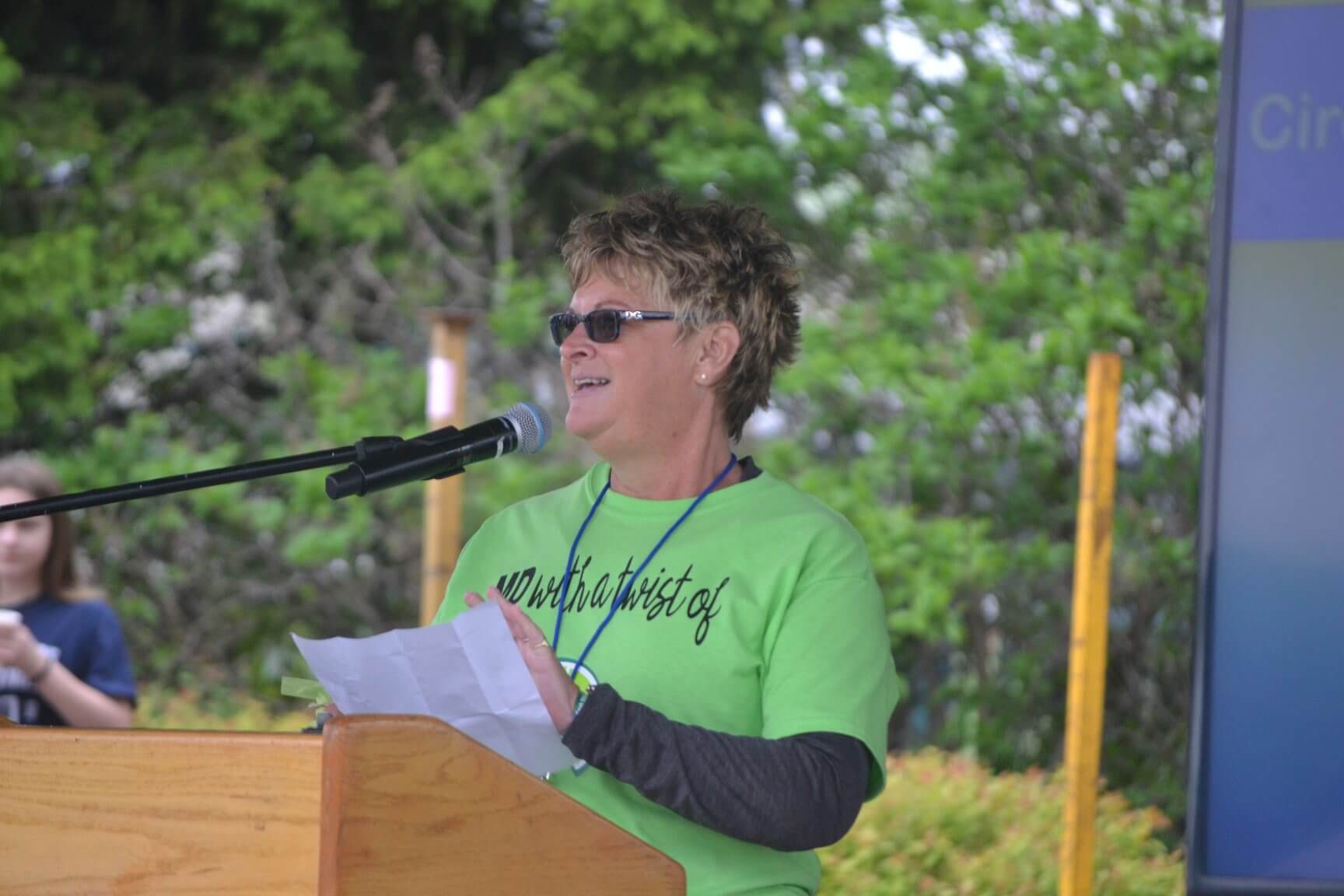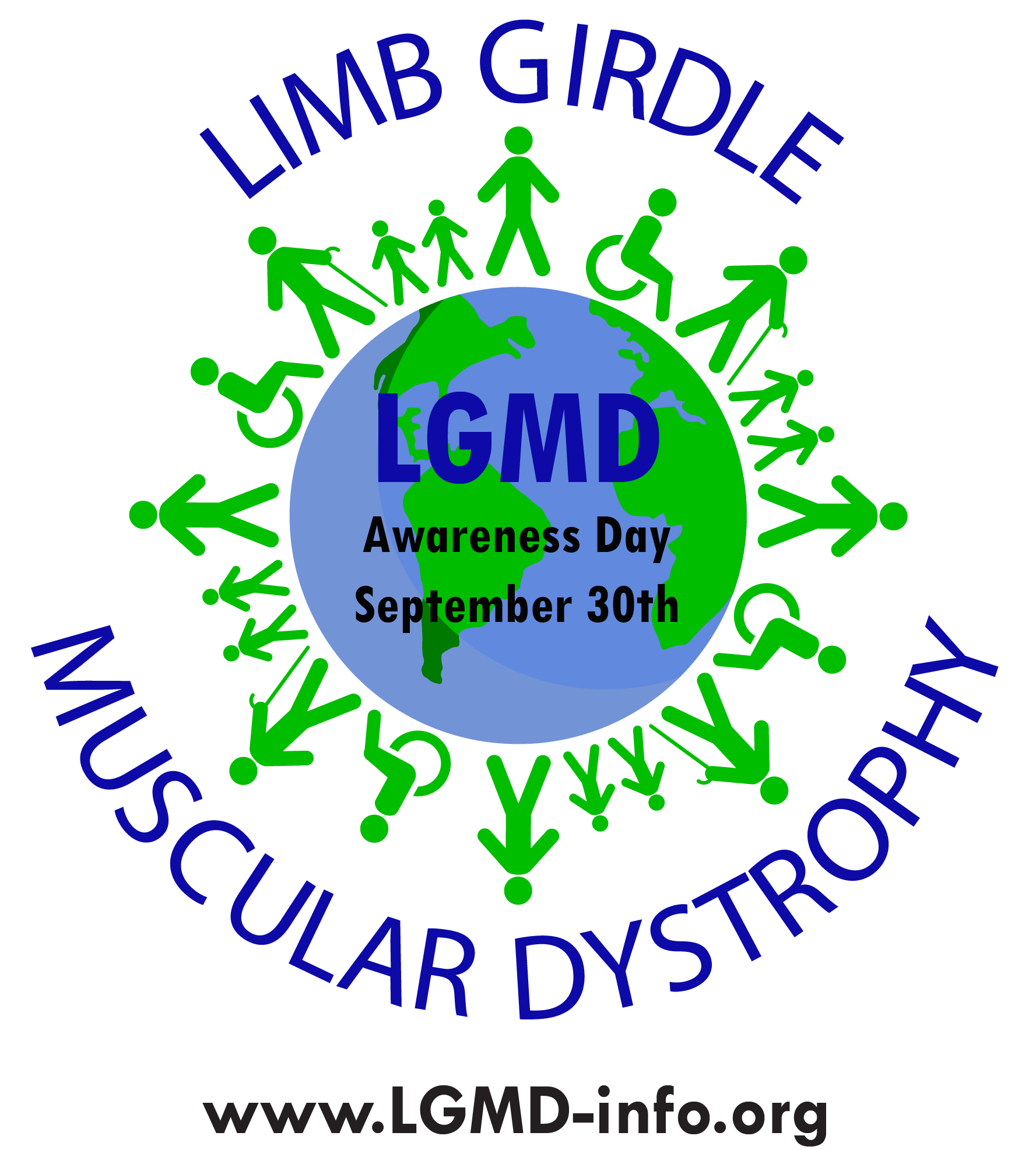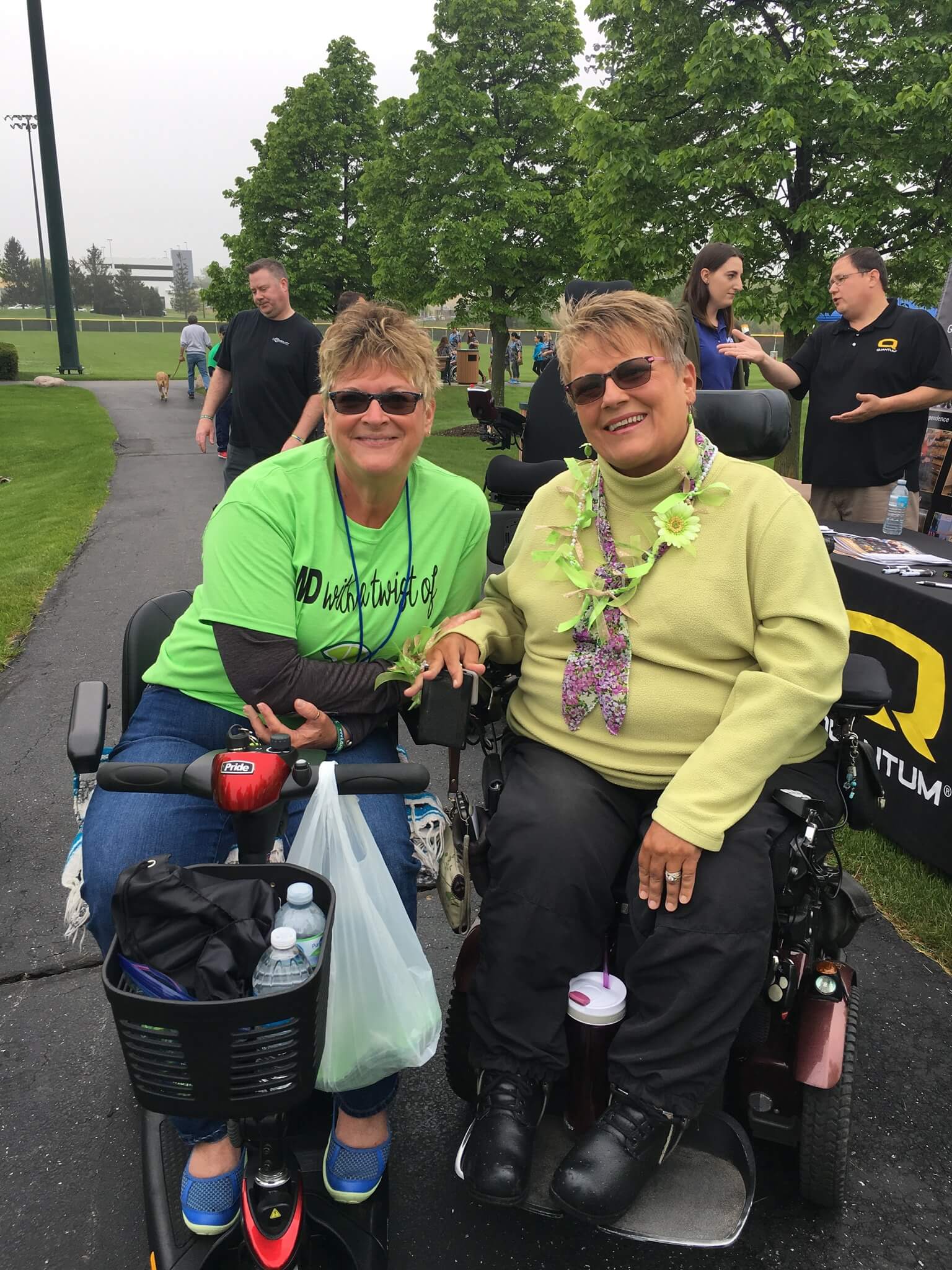
Every year on Sept. 30, people around the world wear lime green and come together online and in their communities to celebrate Limb-Girdle Muscular Dystrophy (LGMD) Awareness Day. Now four years old, LGMD Awareness Day has been embraced by the LGMD patient community as a way to raise awareness and honor individuals living with the more than 30 different subtypes of the condition.
For Illinois native Karen Cole, 55, LGMD Awareness Day holds a special place in her heart. After living for 20 years with a general, unspecified LGMD diagnosis, Karen finally learned her genetic subtype, LGMD2I, in 2016. With her diagnostic odyssey finally complete, many doors opened, enabling her to connect with other patients and researchers and forge her own path as an advocate for the LGMD disease community.
Today, Karen embraces the role of volunteer organizer and “lime green campaign coordinator” of LGMD Awareness Day.
A mysterious diagnosis
Growing up, Karen dealt with unexplained muscle weakness throughout adolescence.
“I was the kid in gym who couldn’t run around the track,” Karen says. “I also had large calves and tight hamstrings.”
A few years later, after graduating college, getting married and starting a family, she noticed her symptoms progressed even further.
“After I had my second daughter in 1993, I formed a different gait,” Karen says. “I began to have difficulty climbing stairs and needed to hang on to the rail.”
In 1996, at age 33, Karen had a muscle biopsy and was given a best-guess diagnosis of limb-girdle muscular dystrophy. However, because of the technology at the time, the exact subtype could not be determined.
“They were pretty sure it was limb-girdle muscular dystrophy, potentially LGMD type 2D, but they weren’t really sure,” Karen says.
For Karen, this disease, whatever it might be, had its frustrating moments.
“My daughters were cheerleaders and it felt isolating that I was the only mom who couldn’t climb the bleachers for games,” Karen says. “It felt like I was out on my own.”
Overall, however, Karen counts her blessings every day. “I have a great husband, two wonderful adult daughters, tons of love and support from family and friends, and I love my job as a religious education coordinator at my local church,” she says.
Knowledge is power
In 2015, Karen was reading MDA’s quarterly magazine, Quest, when she noticed an ad from Emory Genetics Laboratory in Atlanta that advertised free genetic testing for patients suspected of having LGMD. Karen jumped at the opportunity to take the test. In January 2016, after 20 years of ambiguity, Karen finally learned her diagnosis: limb-girdle muscular dystrophy type 2I (LGMD2I), with a mutation in the FKRP gene.
Finally, she knew what she was up against.

“My world changed,” Karen says. “This diagnosis led me to a lot of resources that I didn’t know were there and started me on my journey to advocacy.”
Since receiving her diagnosis, Karen has joined the FKRP patient registry, enrolled in a natural history study and has also attended an FKRP-specific patient conference.
“I’ve met so many people who have the same disease, from all over the world,” Karen says. “It’s been so empowering.” Joining different patient groups on Facebook has also put her in contact with patients living with other forms of LGMD, not just 2I.
As an active participant in these patient communities, Karen has found her advocacy voice. On May 19, at the MDA Muscle Walk in Westmont, Ill., Karen got up on stage and shared her patient journey in front of family, friends and MDA supporters. She not only was wearing lime green for the occasion, she also reflected the color in her Muscle Walk team name.
“My team was ‘MD with a Twist of Lime,’” Karen says. “It was such a great day and an amazing experience to share my story and raise awareness for LGMD.”
Connecting with the LGMD Awareness Day initiative

One of Karen’s most notable patient connections was with Carol Abraham, a Wisconsin woman living with LGMD2A and the founder of the Limb-Girdle Muscular Dystrophy Awareness Day initiative. The two, who live only a couple hours apart from one another, have met in person twice and have quickly become kindred spirits. In the last two years, Karen has assisted Carol and taken an active role in LGMD Awareness Day planning.
“I’ve gained the unofficial title of ‘lime green campaign coordinator,’” Karen says with a laugh. “I work on incorporating lime green into the campaign theme.”
Karen has been amazed by Carol’s dedication to raising awareness for LGMD.
“To see Carol’s excitement for the day, developing the website and Facebook page and administering all of that, I’m excited to be part of it. She’s done a great job.”
There are many goals of LGMD Awareness Day, with a particular emphasis on education.
“We want to teach people that LGMD is a progressive neuromuscular disease and that there are more than 30 identified subtypes,” Karen says. “We want the public to know just how rare of a condition this is and to be aware of the symptoms in case they or someone they know might have it.”
The appeal of LGMD Awareness Day, according to Karen, is that anyone can celebrate it any way they want.

“A lot of people do walks or car washes or wear lime green wrist bands,” Karen says. “Many of our LGMD ambassadors have reached out to their governors to declare Sept. 30 LGMD Awareness Day in their state, and we have proclamations from almost all the states. One child in New Zealand even got his town to have a parade in his honor!”
Yet, of all the fun ways to celebrate the day, perhaps Karen’s favorite is the “LIMEmoji Challenge.” The challenge, unveiled on Sept. 1, involves re-creating a favorite emoji using a lime and posting the picture on social media, then challenging others to do the same to spread the word about LGMD.
The value of genetic testing
For Karen, perhaps the most important outcome of LGMD Awareness Day is raising awareness for genetic testing.
“We really encourage people to find out if they can get genetically tested and learn their subtype,” Karen says. “Then you can connect with support services like organizations, conferences, Facebook pages, registries, that sort of thing, so you can stay informed. The more patients that can be identified and tracked, the more that can be done for medical research, so that there can one day be treatments and cures.
“Having a subtype really changed my life. It has opened so many doors.”
If you would like to learn more about Limb-Girdle Muscular Dystrophy Awareness Day, including how to participate in the LIMEmoji challenge, click here.
Click here to learn more about MDA’s LGMD genetic testing program.
